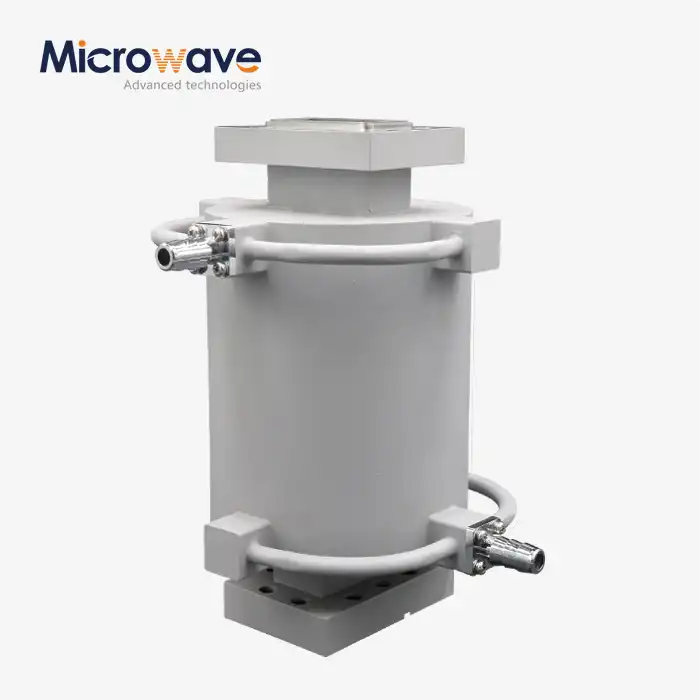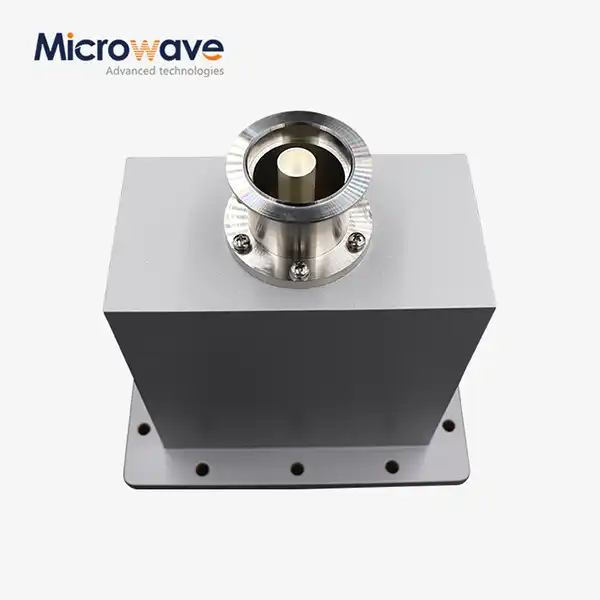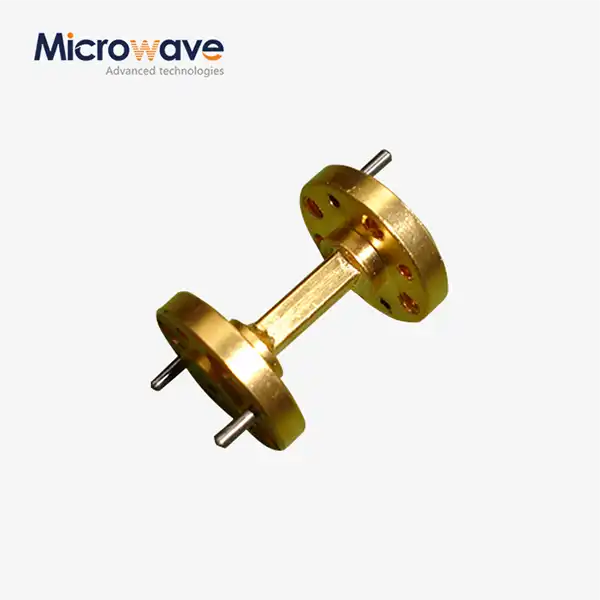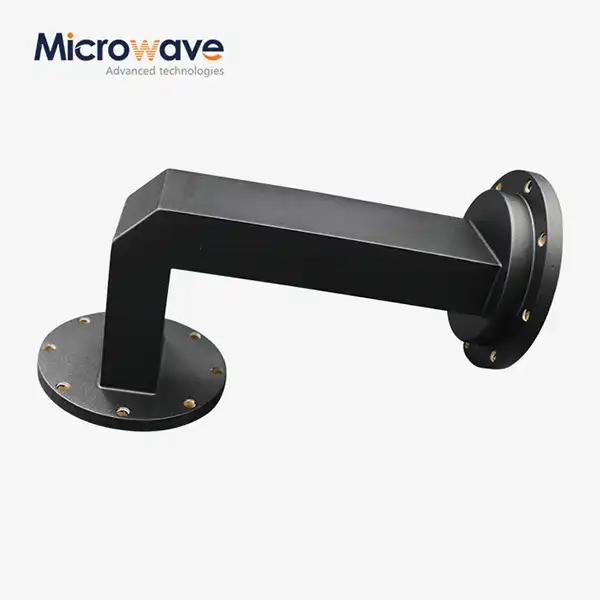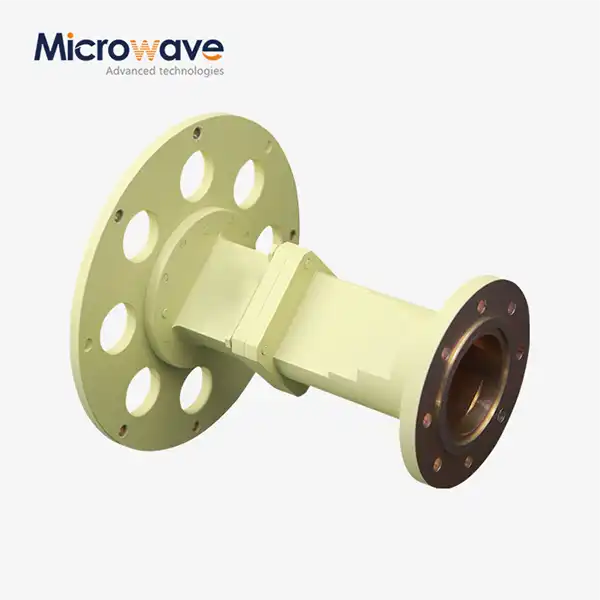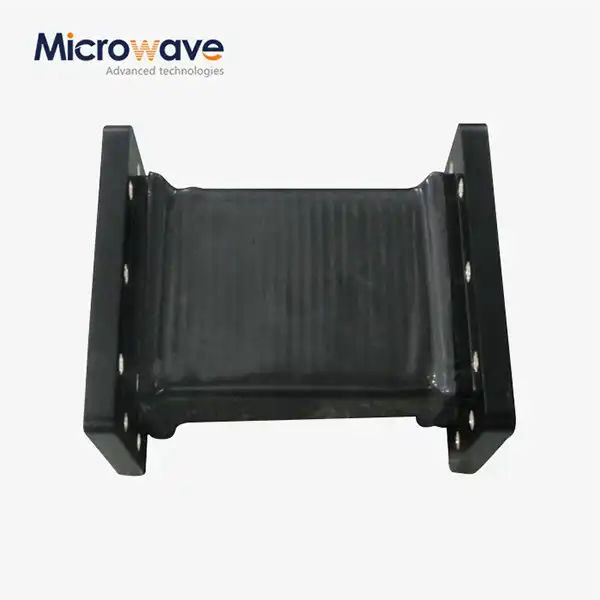Step Ahead of Competitors: Single Channel Coaxial Rotary Joint for Cutting-Edge Systems
In today's rapidly evolving technological landscape, engineers face a critical challenge: maintaining uninterrupted signal integrity in rotating systems while minimizing transmission losses. Whether you're developing advanced radar platforms, satellite ground stations, or aerospace defense systems, signal degradation during rotation can compromise your entire operation. The Single Channel Coaxial Rotary Joint addresses this pain point head-on, delivering seamless RF signal transmission in the most demanding rotating applications. This precision-engineered component ensures your cutting-edge systems maintain peak performance where competitors' solutions fall short, providing the reliability that modern telecommunications, defense, and aerospace industries demand.
Understanding Single Channel Coaxial Rotary Joint Technology
The Single Channel Coaxial Rotary Joint represents a breakthrough in microwave component engineering, specifically designed to facilitate continuous RF signal transmission across rotating interfaces. Unlike traditional waveguide rotary joints, coaxial rotary joints offer a compact and lightweight alternative that excels in 50-ohm rotating systems where uninterrupted, low-loss signal transfer is paramount. These precision components serve as the critical link between stationary and rotating parts of complex systems, enabling seamless communication without signal interruption or degradation. Advanced Microwave Technologies Co., Ltd has engineered these rotary joints to operate across an impressive frequency range from DC to 18 GHz, accommodating everything from legacy communication systems to modern high-frequency applications. The design philosophy centers on maintaining signal integrity while withstanding the mechanical stresses inherent in continuous rotation. With insertion loss maintained at ≤ 0.2 dB and VSWR kept at ≤ 1.25:1, these components ensure that signal quality remains consistent throughout operation, even at rotation speeds up to 60 RPM. The engineering behind Single Channel Coaxial Rotary Joint technology involves sophisticated mechanical design and material science. By utilizing high-quality aluminum alloy or stainless steel construction, these components achieve durability while maintaining the electromagnetic properties essential for RF transmission. The precision machining and assembly processes ensure minimal signal reflection and maximum power transfer, capabilities that distinguish professional-grade components from inferior alternatives in the marketplace.
Key Technical Advantages of Single Channel Coaxial Rotary Joints
Broad Frequency Coverage and Signal Integrity
One of the most significant advantages of modern Single Channel Coaxial Rotary Joint designs is their exceptional frequency coverage. Operating from DC to 18 GHz, these components support a vast spectrum of applications across telecommunications, radar, and satellite communications. This broad frequency support eliminates the need for multiple specialized components, simplifying system design and reducing overall costs. Engineers can rely on a single rotary joint solution for diverse frequency requirements, streamlining procurement and maintenance processes. The signal integrity maintained across this frequency range is equally impressive. With insertion loss limited to just 0.2 dB maximum, power transfer efficiency remains exceptionally high throughout the operational bandwidth. This low-loss characteristic is crucial for applications where signal strength directly impacts system performance, such as in long-range radar detection or satellite uplink transmissions. The optimized design minimizes reflections and standing waves, ensuring that transmitted power reaches its destination with minimal attenuation.Furthermore, the VSWR specification of 1.25:1 or better indicates excellent impedance matching between the rotary joint and connected system components. This matching is critical for preventing signal reflections that could cause interference, reduce effective transmitted power, or damage sensitive equipment. In high-power applications handling up to 200 watts continuous wave power, proper impedance matching becomes even more critical to prevent hot spots and ensure reliable long-term operation.

Compact Design and System Integration
The compact and lightweight nature of Single Channel Coaxial Rotary Joints provides substantial advantages over waveguide alternatives, particularly in space-constrained applications. Modern aerospace and defense systems demand components that deliver maximum performance while occupying minimal space and adding minimal weight to overall system mass. These rotary joints meet this requirement through innovative mechanical design that packs sophisticated RF performance into surprisingly small packages. Integration flexibility represents another key advantage. With customizable connector types including SMA and N-Type configurations, engineers can specify rotary joints that interface seamlessly with existing system architectures. This customization capability extends beyond connectors to include physical dimensions, mounting configurations, and even frequency optimization for specific applications. Such flexibility accelerates system development cycles and reduces the engineering challenges associated with incorporating new components into established designs. The environmental resistance built into these components further enhances their suitability for demanding applications. Operating reliably across temperature ranges from -40°C to +85°C, Single Channel Coaxial Rotary Joints function effectively in extreme environmental conditions. Whether deployed in arctic monitoring stations, desert military installations, or high-altitude aerospace platforms, these components maintain consistent performance. This environmental resilience, combined with their compact form factor, makes them ideal for applications where space, weight, and reliability are equally critical considerations.
Critical Applications Driving Demand
Satellite Communications Infrastructure
In satellite communications, Single Channel Coaxial Rotary Joints play an indispensable role in ground station tracking systems. As satellite ground stations must continuously track orbiting satellites across the sky, their antenna systems require precise mechanical rotation coupled with uninterrupted signal transmission. The rotary joint serves as the critical interface between the fixed transceiver equipment and the rotating antenna assembly, enabling seamless signal transfer throughout the tracking motion. The performance requirements for satellite communication applications are particularly stringent. With high-value signals carrying critical data, voice communications, and high-definition video content, any signal degradation directly impacts system capacity and reliability. The low insertion loss of advanced Single Channel Coaxial Rotary Joints ensures that precious transmitter power reaches the antenna with maximum efficiency, while the excellent return loss characteristics prevent reflected power from damaging sensitive transmitter components. Modern satellite ground stations increasingly operate at higher frequencies to maximize data throughput, making the broad frequency coverage of contemporary rotary joints especially valuable. As the industry transitions toward Ka-band and higher frequency operations, rotary joints that maintain consistent performance across wide frequency ranges become essential infrastructure components. Advanced Microwave Technologies Co., Ltd addresses this need through precision engineering that extends reliable operation well into the microwave spectrum, supporting current requirements while providing headroom for future system upgrades.
Aerospace and Defense Systems
Aerospace and defense applications represent some of the most demanding environments for Single Channel Coaxial Rotary Joint technology. Military radar systems, weapon platforms, and surveillance equipment require components that maintain flawless performance under extreme conditions while delivering the reliability that mission-critical systems demand. In rotating radar antenna systems, rotary joints enable continuous 360-degree scanning while maintaining the signal quality necessary for accurate target detection and tracking. Defense applications often involve high-power transmission requirements that push component capabilities to their limits. With power handling capacity up to 200 watts continuous wave, advanced Single Channel Coaxial Rotary Joints support both surveillance radars and active electronically scanned arrays where significant RF power must be transferred across rotating interfaces. The robust construction using aerospace-grade materials ensures these components withstand not only electrical stresses but also mechanical shock, vibration, and the harsh environmental conditions typical of military deployments. The reliability imperative in defense applications cannot be overstated. System failures during critical operations can have severe consequences, making component reliability a paramount concern. Single Channel Coaxial Rotary Joints manufactured by Advanced Microwave Technologies Co., Ltd undergo rigorous quality control procedures and testing protocols that ensure consistent performance throughout their operational lifetime. This commitment to quality, backed by ISO 9001:2015 certification, provides defense contractors and military organizations with the confidence their systems will perform when needed most.
Telecommunications Network Equipment
Within telecommunications infrastructure, Single Channel Coaxial Rotary Joints enable advanced antenna systems that optimize network coverage and capacity. Base station antennas equipped with mechanical steering capabilities use rotary joints to adjust coverage patterns dynamically, responding to traffic demands and optimizing signal strength across service areas. This capability becomes increasingly important as networks densify and operators seek to maximize spectral efficiency. The low transmission loss characteristic of quality rotary joints directly translates to improved network performance. In wireless communications, every decibel of signal loss represents reduced coverage area or decreased data rates for end users. By minimizing insertion loss to 0.2 dB or less, Single Channel Coaxial Rotary Joints help telecommunications operators maximize their infrastructure investments, extending coverage and improving service quality without requiring additional transmitter power or cell sites. Telecommunications applications also benefit from the customization capabilities that advanced manufacturers offer. Network equipment varies widely in specifications and form factors, requiring rotary joint solutions tailored to specific installations. Whether adapting to unusual frequency bands, accommodating unique mounting requirements, or meeting specific environmental protection standards, customizable Single Channel Coaxial Rotary Joints provide telecommunications engineers with solutions that integrate seamlessly into diverse network architectures.
Manufacturing Excellence and Quality Assurance
Advanced Microwave Technologies Co., Ltd brings over 20 years of expertise in microwave component manufacturing to every Single Channel Coaxial Rotary Joint produced. Established in the 2000s, the company has developed sophisticated manufacturing capabilities centered around its remarkable 24-meter microwave darkroom, a state-of-the-art facility that enables precise testing and validation of antenna and RF components across frequencies from 0.5 to 110 GHz. This facility represents a significant competitive advantage, allowing the company to verify component performance with exceptional accuracy. The manufacturing process incorporates strict quality control procedures aligned with ISO 9001:2015 standards, ensuring consistent product quality across production runs. Every rotary joint undergoes comprehensive testing that validates electrical performance parameters including insertion loss, return loss, and power handling capability. Mechanical testing verifies rotation smoothness, torque requirements, and long-term durability under continuous operation. This multi-faceted testing approach ensures that components meet specifications not only at initial delivery but throughout their operational lifetime. Environmental responsibility represents another dimension of manufacturing excellence at Advanced Microwave Technologies Co., Ltd. With ISO 14001:2015 certification, the company demonstrates its commitment to minimizing environmental impact throughout the manufacturing process. All products comply with RoHS directives, ensuring they meet international standards for hazardous substance restrictions. This environmental consciousness, combined with ISO 45001:2018 certification for occupational health and safety, reflects a comprehensive approach to responsible manufacturing that resonates with customers who value sustainability alongside technical performance.
Customization and OEM Services
Recognizing that every application presents unique requirements, Advanced Microwave Technologies Co., Ltd offers comprehensive OEM services that enable customers to obtain precisely tailored Single Channel Coaxial Rotary Joint solutions. Custom designs address specific frequency ranges, power levels, physical dimensions, and environmental requirements that standard catalog products may not fully satisfy. This customization capability proves invaluable for specialized applications where off-the-shelf components cannot deliver optimal performance. The customization process begins with detailed consultation between the customer's engineering team and Advanced Microwave's experienced technical staff. Through collaborative design sessions, requirements are refined and translated into specific component specifications. The company's engineering team leverages its extensive microwave expertise to propose solutions that balance performance, cost, and manufacturability, ensuring that custom designs remain practical for production while meeting stringent performance targets. Fast prototyping services accelerate the development cycle, enabling customers to evaluate custom designs quickly before committing to full-scale production. Rapid prototype turnaround allows for iterative refinement, where initial designs can be tested, modified, and retested to achieve optimal performance. This agile development approach reduces time-to-market for new systems and products, providing customers with competitive advantages in fast-moving markets. Throughout the prototyping and production phases, comprehensive technical support ensures seamless integration of Single Channel Coaxial Rotary Joints into customer systems.
Conclusion
Single Channel Coaxial Rotary Joint technology represents a critical enabler for modern rotating RF systems across telecommunications, defense, and aerospace applications. Advanced Microwave Technologies Co., Ltd delivers components that combine exceptional electrical performance with robust mechanical design and comprehensive customization capabilities.
Cooperate with Advanced Microwave Technologies Co., Ltd.
Partner with a China Single Channel Coaxial Rotary Joint manufacturer that delivers excellence. As a leading China Single Channel Coaxial Rotary Joint supplier and China Single Channel Coaxial Rotary Joint factory, we offer High Quality Single Channel Coaxial Rotary Joint solutions with competitive Single Channel Coaxial Rotary Joint price points. Our China Single Channel Coaxial Rotary Joint wholesale programs and Single Channel Coaxial Rotary Joint for sale options provide flexible procurement pathways. Contact craig@admicrowave.com today for customized solutions backed by 20+ years of microwave expertise, ISO-certified quality, and comprehensive technical support that transforms your system requirements into reliable, high-performance reality.
References
1. Skolnik, M. I. (2008). "Radar Handbook, Third Edition." McGraw-Hill Education. Chapter on Rotary Joint Technology and Applications in Radar Systems.
2. Balanis, C. A. (2016). "Antenna Theory: Analysis and Design, Fourth Edition." John Wiley & Sons. Technical analysis of rotating antenna feed systems and impedance matching.
3. Pozar, D. M. (2012). "Microwave Engineering, Fourth Edition." John Wiley & Sons. Comprehensive coverage of coaxial transmission line theory and RF component design.
4. Rothwell, E. J. and Cloud, M. J. (2018). "Electromagnetics, Third Edition." CRC Press. Fundamental principles of electromagnetic wave propagation in rotating reference frames.




